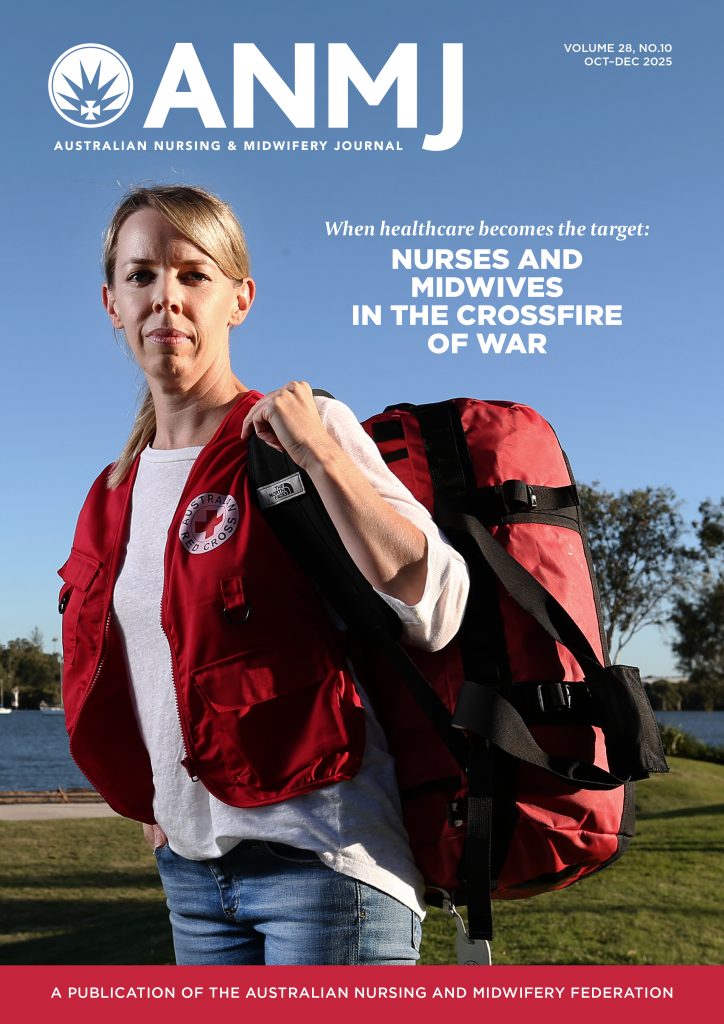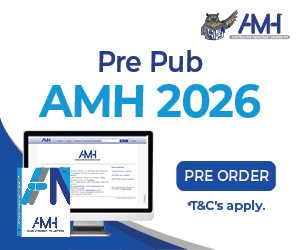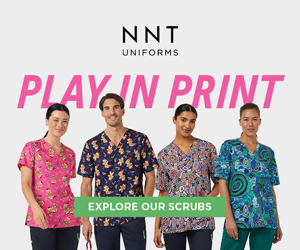According to the Australian Institute of Health and Welfare (AIHW), men made up just 1.6%, or 448, of the 28,211 employed registered midwives in 2015.
The ANMJ spoke to New South Wales-based Clinical Midwifery Educator (CME) Daniel Evans about why he chose to pursue the non-traditional career path for men and what he loves about the job.
What drew you to midwifery?
I did not set out in pursuit of my midwifery career. Rather, it was something I grew into. When I finished high school, l I had an opportunity to explore a Bachelor’s Degree in either teaching or nursing.
I had attended some work experience in primary school teaching and I loved working with kids. However, I decided to explore nursing in the end. I did think I might do some kind of teaching in the future.
Very early into my nursing degree I met a very passionate midwife/nurse who guided us through the beginning of the lifespan from conception to birth.
I found her intriguing, passionate and a little unconventional.
From this, I determined I was going to look deeper into this ‘midwifery thing’ and looked for opportunities to engage in maternal and infant care from that point.
As it turns out, this little seed that was planted has turned into an almost 20-year career in midwifery.
Male midwives make up under 2% of the workforce. What was the reaction from friends and family when you told them you wanted to become a midwife?
I don’t remember much about what my friends and family thought.
I’ve always been passionate and dedicated in my pursuits. I feel as though I had terrific support because my people loved and supported me – whatever my pursuit turned out to be.
I feel as though they had the same confidence that I had – which was to say that I felt I could be really great as a nurse or a midwife.
I actually love being in the minority. Although, I do feel as though you really have a little more pressure to be great at what you do.
Otherwise, you’d be pretty quickly caught out if you were not very competent, respectful or caring.
What does your job as a midwife involve and what is your approach to the profession?
Currently, I’m working as a clinical midwifery educator.
This role enables me to look at care provision for the woman and her family from a different viewpoint.
I work with developing and experienced midwives to enable them to provide high quality, evidence informed midwifery care.
I work with midwifery managers, consumers and the multidisciplinary maternity team to identify areas in need of improvement and help formulate collaborative plans to improve care for the woman and her family.
What key attributes make a good midwife?
Empathy, patience and knowledge. Additionally, you need these attributes in your role as an advocate for the woman and her family.
You also need to be a skilled communicator and have an underlying appreciation for the role of the collaborative team.
When it comes to offering women the best possible care, working collaboratively with both obstetric and midwifery colleagues and the broader health team is supremely important.
I think having a great way with expectant dads is another key attribute to being a good midwife and can really help with dads engaging well in pregnancy and birth, which, in turn, has been shown to positively influence mothers’ experience of pregnancy, birth and early parenting.
What do you love most about your job?
I love working with families and promoting parents’ engagement in the pregnancy, birth and parenting journey.
I love standing back and reminding families, “You’ve got this!!!” and that “you’re stronger than you know” and then, affirming how amazing they are to have conceived, grown, birthed and nourished a new little human – how cool is that!?
What is it like working in the profession as a minority and what challenges does this bring?
I think there was a little stigma toward the beginning of my career.
However, I found very quickly that women and their families responded very positively as they began to develop trust in my respectful care and, later, my developing knowledge and expertise in the area.
I did have some ‘more experienced’ colleagues earlier on that watched me a little more closely and I did have a few challenges that may have been gender-related along my career pathway.
However, I did find that some of those who presented my greatest challenges became my fiercest advocates as they watched me display excellence through respectful, woman-centred care.
Are women more comfortable being treated by female midwives?
Women are most comfortable when treated with respect and dignity. They are most comfortable when they see you as their strong advocate in this incredibly powerful time in their life.
Sometimes, women prefer a female carer. Perhaps they have had a traumatic childhood or there are cultural considerations and I have needed to be respectful of these backgrounds.
However, sometimes I think that women sometimes prefer a male carer.
I had one situation where a woman wasn’t sure if she wanted to have me as her midwife.
I asked if she would be ok with a pregnancy visit ahead of the birth and she was happy for that.
In the meantime, her husband (without my knowledge/prompting) had suggested to her that it would be ok.
After the visit, the woman called me back and said that she really wanted me to provide their pregnancy and birth care and following the birth and postnatal care, she asked if I would care for her if they had any more children.
Sure enough, two years later I was caring for them with their next pregnancy.
Is there a greater place for men in midwifery?
There’s a great place for men in any profession they care deeply about. It is the same for women in male-dominated professions. The contrast helps bring balance to the workplace and clients of these services have a potentially greater experience. It would be similar in politics.
That said, I really think that the access I have with dads, particularly being a dad myself, is really important and powerful.
What are the biggest challenges facing the profession and what does the future look like?
I think one of the biggest challenges in the midwifery space is integrating the important aspects of traditional midwifery (sharing knowledge, physical support, and empowering women toward birth) with the demands of a 2019 system and technologies.
Balancing good documentation for communication with gleaning information for establishing data that may later improve care and outcomes.
It is important not to lose the wonder of conception and birth in the frustration of ticking boxes and keeping the lawyers at bay.
Midwifery is also becoming more professional but we are also constrained, in some ways, by an industrial framework.
We need to be more strategic about how we promote models of midwifery care that are sustainable and can carry us into the future.
Despite good evidence, continuity of midwifery carer models are still slow to emerge across the country and newly graduating midwives are expecting these models to be more available for women in Australian communities.
Privately practicing midwives and midwives in small private group practices continue to struggle to find their place in the maternity landscape and would benefit from greater levels of support in this space.
Overall, midwifery’s future is bright and full of potential and with a few strategic helps along the way we have much to look forward to.









One Response
Its odd to me that midwifery has a stigma against men providing birth care. I had an obstetrician for my births and that person was a male. It was not once considered odd by me or friends (that was known to me). Why should it be any different for midwifery?